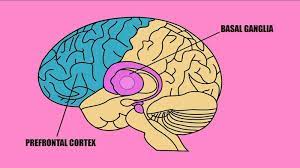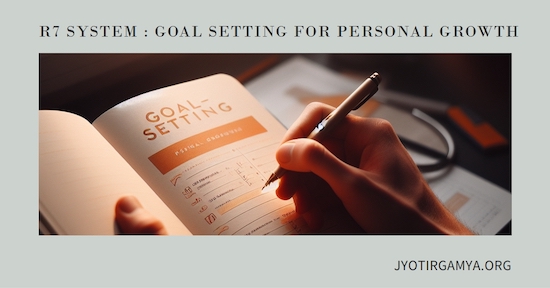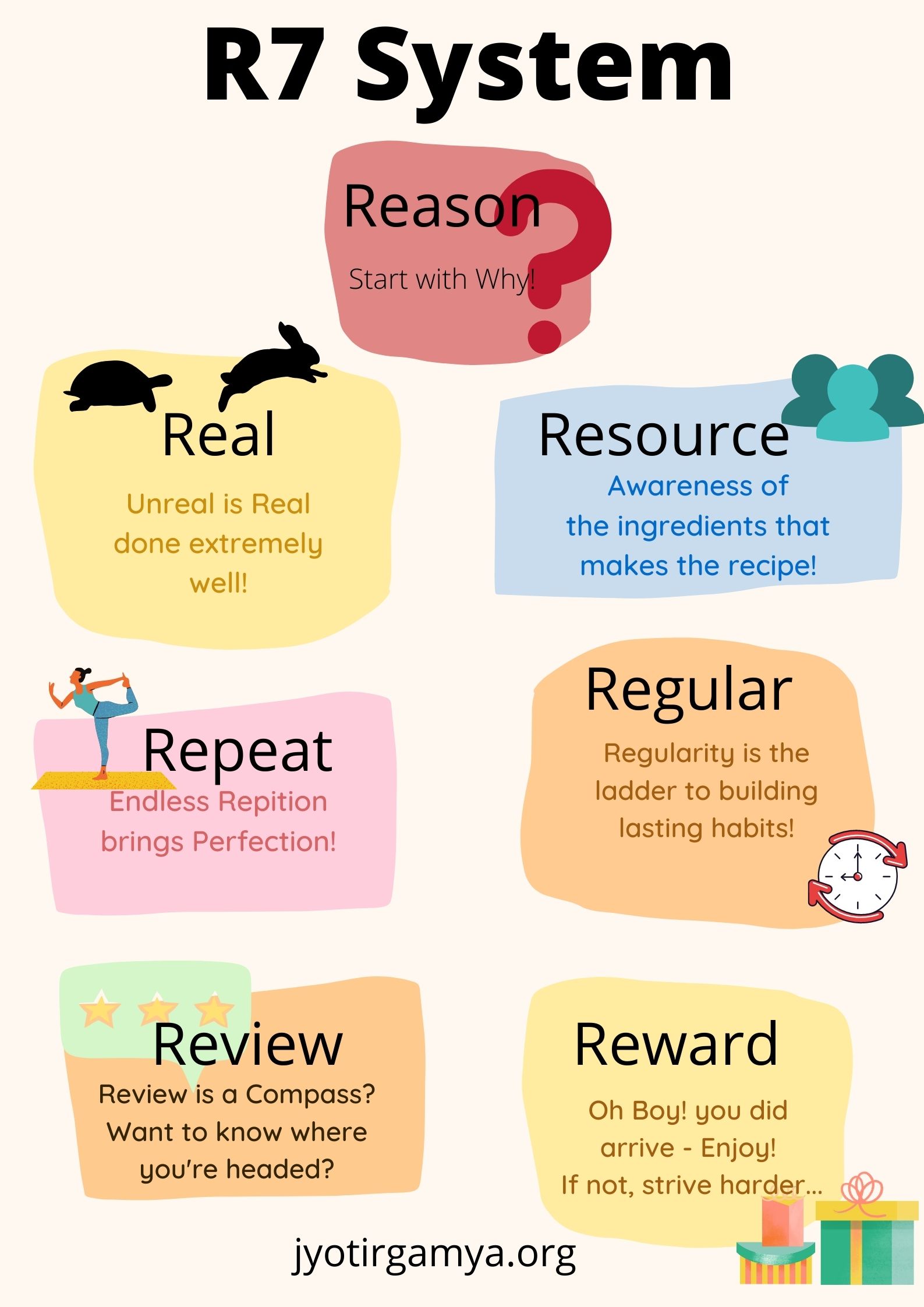R7 System : Goal Setting for Personal Growth
Some 4000 years ago, the Babylons celebrated a massive 12-day harvest festival called Akitu. One of the rituals during the festival was to make promises to the Pagans(Gods) to pay their debts and return any objects they had borrowed.
If they kept to their word, their Gods would shower kindness; if not, the individual would fall out of the Gods' grace for the coming year.

Sarah Pruitt from History Channel argues that these promises could be considered the forerunners of our New Year resolutions.
The symbolic transition from one year to another inspires many of us to make New Year’s resolutions.
In 2007, Richard Wiseman surveyed[1] 3000 people and found that 88% of New Year’s resolutions fail. In addition, a US News publication[2] found that 80% of people who set New Year’s resolutions give up.
If we were to go by logic, any time should be good to start the change process; an auspicious January should not be waited for. However, magical thinking and hope for better times lead us to set resolutions every new year. If we stretch things a little longer each time, we could become better versions of ourselves.
In this article, let us dig into resolution management.
Any change, whether for the individual or the society needs will. Willpower is the mother of change. Unfortunately, like all good things, willpower is in limited supply. Willpower is like a muscle. If exercised too much, it gets tired, and it can be strengthened with proper training.
Robert Sapolsky[3], a neurobiologist at Stanford, believes that the seat of this will is the prefrontal cortex which encourages the brain to stick to long-term goals at the cost of short-term gratification—picking salads over junk, going to the gym instead of sleeping.
Let us talk a little about our routines, habits, and actions.
The basal ganglia in the brain are the seat of habits[4]. It is a rather primitive region that stores habits, routines, and responses. When you start learning a new skill, the PFC is exercised; when you have mastered the talent, the task is delegated to the basal ganglia. For instance, when learning to drive, you must focus on managing the steering wheel, the clutch, the brake, and the accelerator.
When you have repeated it for some duration, it starts coming naturally to you. For example, you can converse with fellow passengers while driving; this would not be possible initially, will it? Biologically, after repetitions, the action gets embedded, and the prefrontal cortex is freed to take care of other cognitive functions.

When we are working on changing a habit, the basal ganglia is at war with the PFC. Researchers have found that PFC needs serotonin for its proper functioning. Amongst other ways, being kind to oneself, practicing self-affirmation and reflecting on our strengths leads to secretion of serotonin.
When it comes to New Year’s resolutions, they are driven to get rid of the perception of incompleteness. We feel inadequate and strive to fill this gap through self-discipline and cumbersome striving. While the practice goes good for a few days, some urgent matter strikes us and our priority changes. This is how most New Year resolutions fail.
Instead of wallowing over the weaknesses, a better way of approaching them could be to acknowledge our strengths, practise self-compassion and try to make small lasting changes.
A large part of meeting resolution is also based on how we set our resolution. George T. Doran in November 1981 coined the term SMART as a goal setting framework. This is the classical approach for setting goals.
Specific - well-defined and clear.
Measurable - progress can be easily measured.
Achievable - should be realistic.
Relevant - should fall in line with your priorities.
Timely - it should have a start and end date.
Let’s take an example of a general new year resolution.
“I want to be a better painter.”
It fails the following :
-
it is not specific
-
how long will it take you to be “better”, we can’t put a start and finish date.
-
What metrics will you use to measure it?
But what if you want to be a better painter in the new year? It does sound exciting!
This brings us to the realisation that in an organizational structure a SMART goal could work, for other personal-life scenarios there are challenges. The SMART framework focuses on the end result but not on the requirements and process. How do you stay motivated? What resource allocation needs to be done? How do you deal with the Plateaus? What about the PFC and self-care aspect we discussed earlier?

Here’s a different system that I designed for myself and found to be better suited for personal goal-setting.
Reason - Why do you want to pursue this goal? Is the goal aligned with your passion? Do you find purpose in it? Is it worth pursuing at all?
Real - Is your goal realistic? Have you done any homework? Are you building on any of your cornerstone habits? When building a new habit the PFC is at war with the basal ganglia, the prior work done in the area will act as a reinforcement when you start feeling uncomfortable. For instance, if you are a business, you could set yourself an audacious goal of reaching $ 100 million in revenue. This number would be an air castle if you are doing only 1 million dollars in annual revenue now. The goal should be realistic and you should have some background context already to arrive there.
Resource - What do you need to succeed? Are you constraining yourself too much? The will is limited, you can’t exhaust all of it on your resolution. What is the support mechanism you have put for you in place to help your pursuit become easy.
Repeat - There are small actions that need to be performed repeatedly to build into a habit. Go out there and do it. What is it that you would “repeat” in each of your iteration.
Regular - The actions you take should be regular for progress to be noticed. If you were to participate in a marathon, you got to be running at least 4 times a week for a couple of months to years depending upon your need.
Review - Instead of measuring the metrics to decimal places, personal goals should have a breathing space and be a simpler review system, as simple as a Yes I did it or No I did not.
Reward - Rewards act as a catalyst when forming a habit. When you reward an action the likelihood of it’s repetition increases and when you punish an action you are less likely to repeat it. When you reward your effort the brain starts mapping it with something worth pursuing. This is the basis of conditioning. The rewards do not have to be grand or the punishment does not have to be harsh. If you have performed the action, reward yourself with something light, and if you skip the routine, punish yourself with something light.

Let us say our goal is to Lose Weight.
Here’s the SMART system
- Specific - I want to lose 10 kgs.
- Measurable - I will measure at the end of every month, approximately 2kgs per month.
- Attainable - Is it possible to attain? I don’t know, looks like I can.
- Relevant - I want to be physically fit, it will add to productivity hence it is relevant.
- Time-bound - Roughly about 5 months should do, add another month, say 6 months.
SMART goal : Lose 10 kgs in 6 months, and measure that we lose 2 kgs every month.
Here’s the R7 system
- Reason : I want to lose weight so that I can be physically fit.
- Real : I already have been training, and am aware of the basics. It is very much doable.
- Resource : Have a good support system of peers and coaches who can help me in my journey. It’s going to take only 30 minutes of my day.
- Repeat : I am going to jog for 30 minutes and burn 250 calories.
- Regular : I am going to do this 4 times a week.
- Review : I will log the calorie burns in my journal everyday after the session.
- Reward : After each session, I will reward myself with 15 minutes of rest. If I skip the session, I will skip my evening snacks as minor punishment.
The R7 Goal : I want to lose weight. To do this I am going to jog for 30 minutes and burn 250 calories, 4 times a week. The amount of calories burnt will be logged in the journal / app. Post the session I will reward myself with 15 minutes of rest, and if I skip the routine, I will skip my evening snacks to punish myself.
Losing weight is not just about burning calories but also about diet. The comparison was to bring to your perspective the R7 system, it has more compassion for the individual, tries to avoid blind-shots, focuses more on the process than the result and benefits from the elements of psychology and neuroscience to help develop a better lasting habit.
If you like what we are doing, do spread the word.
FAQs on R7 Goal Setting Framework
The 'Reason' component emphasizes understanding and articulating why a goal is important, ensuring that each goal set under the R7 system aligns closely with personal values and long-term aspirations. This alignment helps maintain motivation and commitment throughout the goal achievement process.
The R7 system advises a holistic approach to resource management, incorporating not just physical resources but also emotional and social support systems. It recommends prioritizing resources that directly contribute to goal achievement and suggests regular assessment to adapt to any changes in availability or needs.
The R7 system leverages neuroscientific principles by encouraging practices that stimulate the brain's reward system, such as setting incremental goals and providing immediate rewards. This approach helps in forming new neural pathways that support habit formation and goal achievement.
To overcome challenges in the R7 system, it is recommended to adjust goals as needed, seek feedback, and use setbacks as learning opportunities. Maintaining flexibility and resilience by adjusting the components of the R7 system can help navigate obstacles effectively.
Integrating the R7 system into a busy lifestyle can be managed by scheduling regular, short review sessions to assess progress and adjust goals, using technology to track progress and set reminders, and choosing rewards that are both meaningful and practical within a tight schedule.
Effective structuring of rewards in the R7 system involves choosing rewards that are immediately gratifying and directly related to the goal. It also recommends ensuring that rewards evolve with the individual's progress, maintaining their relevance and motivational impact over time.
Reviews in the R7 system should be regular and involve honest self-assessment, possibly supplemented with feedback from peers or mentors. Structured reviews should focus on both successes and areas for improvement, allowing for real-time adjustments to strategies and tactics.
The R7 system can be adapted for team settings by ensuring that each team member is aligned with the goal's 'Reason' and 'Resource' requirements, setting collective rewards, and maintaining regular team reviews to keep everyone engaged and accountable.
Yes, the R7 system is designed to be flexible enough to accommodate both short-term and long-term goals. For short-term goals, the focus is on quick feedback loops and immediate rewards, while long-term goals involve more comprehensive planning and sustained effort.
'Regular' in the R7 system emphasizes the importance of consistency in action. Regular actions and check-ins help maintain momentum and ensure that the goal remains a priority, facilitating gradual progress and preventing stagnation.
Essential Reads
Cost-Benefit Analysis of Healthy Emotional Boundaries
Overcome Comparisonitis: Embrace You!
Imposter Syndrome: A Guide to Understanding and Overcoming It
Overcoming Procrastination with Neuroscience
How to Deal with Human Irrationality in the Workplace
Journalling Prompts for Anxiety
Journaling Prompts to Overcome Workplace Jealousy
How to Deal with Intrusive Thoughts
How to Cultivate JOMO: A Practical Guide to achieving Disconnected Joy
Journaling Prompts for Self-Discovery
Discover Gratitude Journaling: Benefits and Tips
Want to stay connected? Here’s our twitter.
Or subscribe to our monthly newsletter containing tools for body, mind, and goal.
References
[1] - http://www.richardwiseman.com/quirkology/new/USA/Experiment_resolution.shtml
[3] - https://en.wikipedia.org/wiki/Robert_Sapolsky
[4] - https://news.mit.edu/2012/understanding-how-brains-control-our-habits-1029
Image Source - https://abc30.com/health-watch-gait-brain-activity-seniors/4385980/